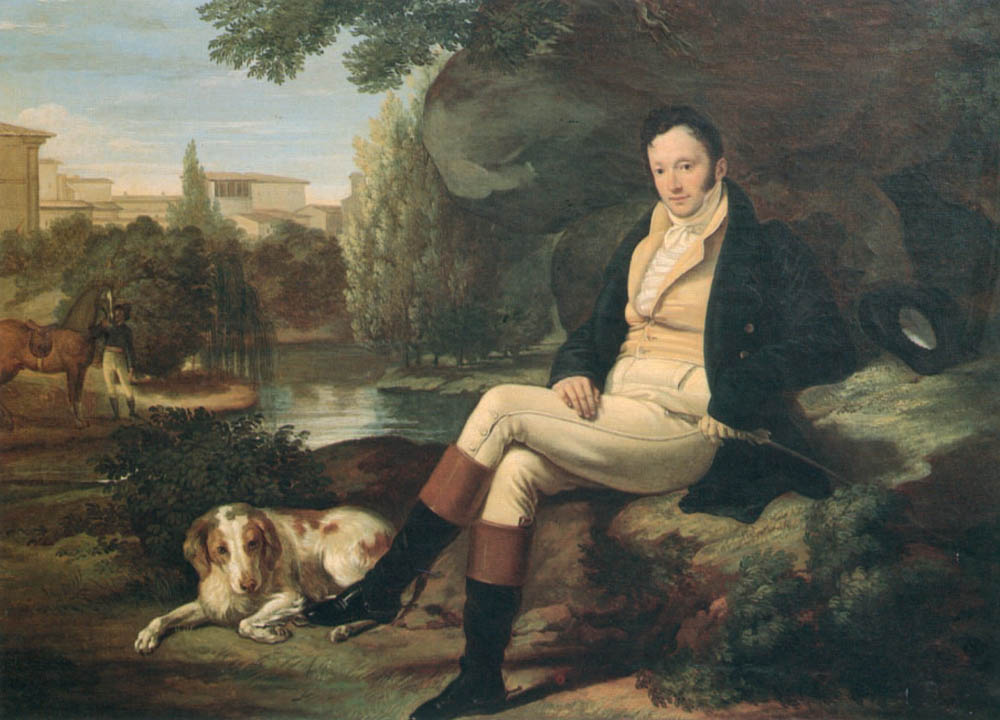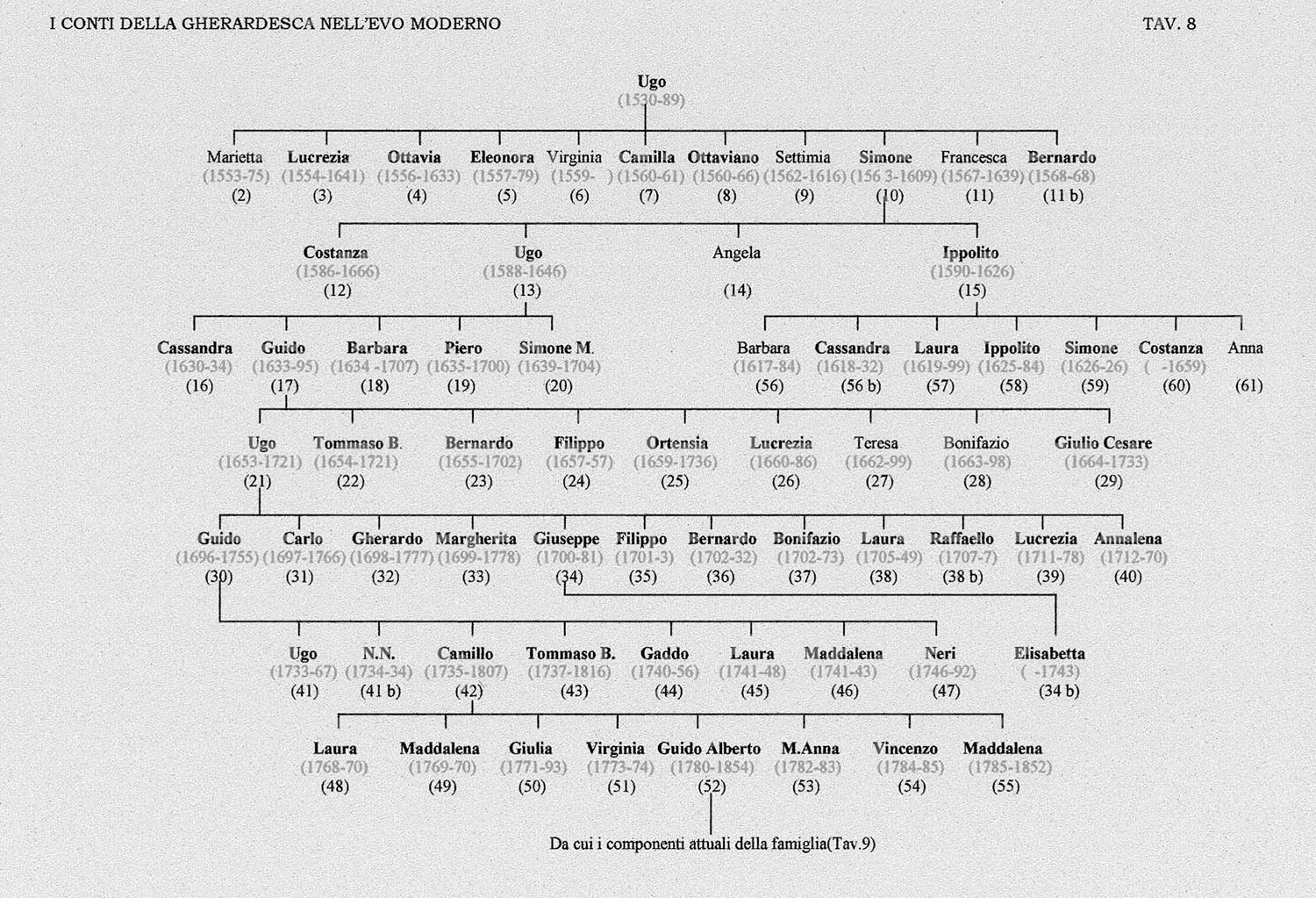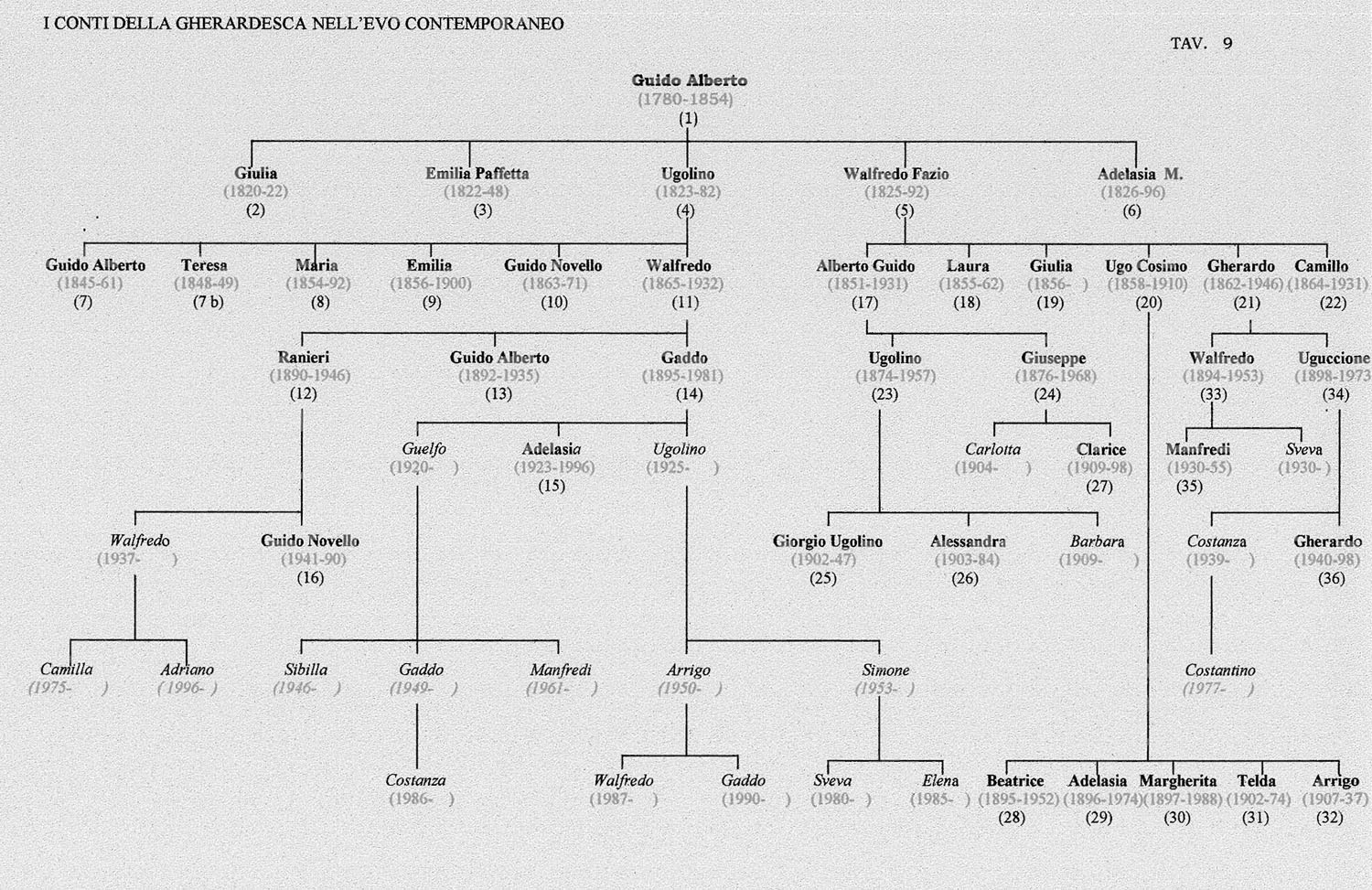Della Gherardesca
The Della Gherardesca family is the absolute protagonist in Castagneto Carducci’s history. This noble family is the common denominator in the history of a large number of villages in this area, such as Bolgheri, Donoratico, Montescudaio, Guardistallo, Riparbella, Settimo, Castagneto e Segalari.
The family’s surname comes from Gherardo, the first family member that we have certain sources of. Gherardo, who lived in the X century, was Lord of Volterra, of Pisa and of the Castle of Donoratico.
One of his ancestors was Saint Walfredo, brother of the Langbard Kings Astolfo and Rachis, whose grandfather was Pemmone del Friuli. From the second half of the X century, this noble family owned lands in different parts of ancient Tuscany. They were appointed Counts of Volterra and, being faithful servants of Henry II the Emperor, their land-ownership greatly increased and they received political and economic privileges.
The family includes a series of religious personalities and saints such as Peter, a cardinal that died in 1145, saint Guido, the beatified Gherardesca, the beatified Gaddo. Additionally, it includes distinguished soldiers, such as the Count Gherardo di Biserno who took part in the battle against the Arabs in the Baleari islands, and the first Mayor of Volterra, Tedice di Castagneto.
At the time of Federico II della Gherardesca, the Ghibellines fought against the guelfi Visconti, and Gherardo fought in Montaperti on Siena’s side against the guelfi from Florence and against Genoa.
The Della Gherardescas obtained lands in Sardinia after Pisa’s expansion in the Mediterranean. Gherardo and Ugolino acquired many lands on the island, among which a portion of the Giudicato di Cagliari (today Sulcis-Iglesiente), where Villa della Chiesa was also located (today Iglesias), and where they also owned the castle Acquafredda.
The famous Count Ugolino (made immortal by Dante’s verses in his Divine Comedy) was Lord of Pisa. He took part in the battle of Meloria in defense of Pisa’s harbor. Since many people from Pisa died during the battle, Ugolino was accused of treason. Once his name had been cleared, he became Pisa’s mayor and had to take care of/maintain the peace after Meloria’s defeat.
Afterwards, the Count was the victim of a conspiracy led by other nobles that accused him again of treason. Count Ugolino was imprisoned in July 1288, in Muda’s Tower, where he died of starvation shortly after together with his children.
In more recent times, Count Cammillo gained a crucial role. The second-born of Count Guido Filippo della Gherardesca and of the Countess Virginia Pandolfini, after a period of military career in Austria, he finally has to go back to Italy for his brother’s death. Cammillo was then the only one that could secure a progeny to the Della Gherardesca.
Therefore, he married Maria Teresa, the daughter of the late marquess Vincenzo Riccardi. In the first years of marriage she gave birth to a series of four daughters, among which only one, Giulia, survived her first year. After some health issues, the doctors advised Maria Teresa against having more children for a period of seven years.
Finally, the long-awaited male child came, Count Guido Alberto, and after him another daughter and another son, both dead before their first birthday. The last one to come was another daughter, Maddalena, the only one of Guido Alberto’s sisters to have a long life.
It was then up to Guido Alberto to continue the dynasty. Count Guido was a distinguished personality that lived in the first half of 1800, he could appreciate art and was an influential member of Accademia dell’Arte Fiorentina (Florence’s Art Academy). Moreover, he was nominated Chamberlain by King Ludovico during Napoleon’s campaign in Italy.
Guido Alberto also reclaimed many lands around Bolgheri and Castagneto. It was indeed thanks to this that in the succeeding years the region became extraordinarily fertile and ideal for agriculture and wine colture.
At the half of the XIX century, Guido Alberto planted cypresses along the main road in Bolgheri, in place of the poplars that were badly planted a few years earlier for the visit of Grand Duke Leopold II. The cypresses then became famous the world over thanks to the poem “Davanti San Guido” by Giosuè Carducci, and they still enchant tourists today.
Guido Alberto had three daughters and two sons, Count Ugolino in 1823 and Count Walfredo in 1825.
The manor was precisely named after Count Ugolino, the first-born of Count Guido Alberto.

Artwork depicting the death of Count Ugolino and his family (XXXIII hell Divine Comedy) – Jules Jean Baptiste Carpeaux, Metropolitan Museum, New York

Conte Camillo della Gherardesca with his second wife – Gherardesca property image

Conte Guido Alberto della Gherardesca, 20 years old, G. Bezzuoli – Gherardesca property image

Conte Ugolino della Gherardesca reads to King Vittorio Emanuele II the outcome of the plebiscite of 1861 – G. Mochi, Palazzo Pitti, Gallery of Modern Art, Florence
Counts della Gherardesca in the modern era

Counts della Gherardesca in the contemporary era




